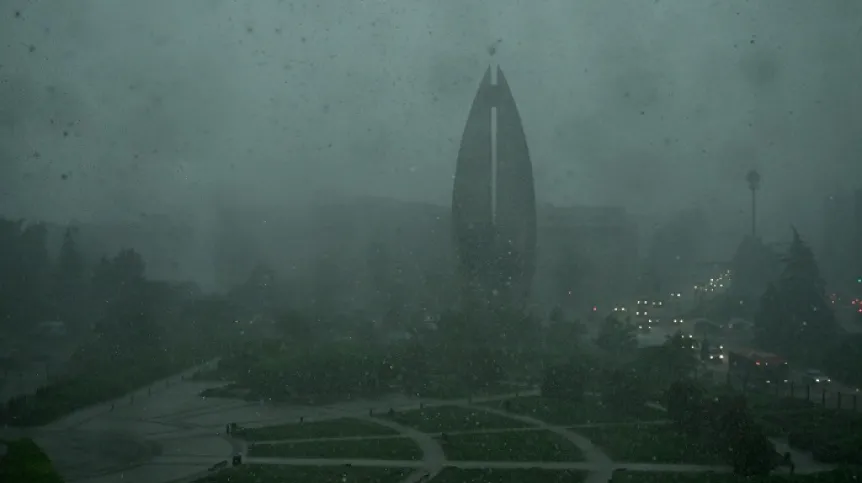
Over the last several years, in Poland we have been observing a trend of a slight but clear decrease in storm activity. However, if storms do occur, the phenomena may become extremely intense, says Artur Surowiecki, a researcher of dangerous weather phenomena from the University of Warsaw.
The doctoral candidate from the Faculty of Geography and Regional Studies of the University of Warsaw and president of the Skywarn Polska association (Polish Storm Hunters) says this is mainly due to the climate warming process.
'Between the Arctic Circle and the subtropical climate zone, i.e. the south of Europe, the thermal gradient (the temperature difference between air masses) decreases. The consequence is a decrease in wind speed, i.e. lower dynamics of air flow in the troposphere over the central part of Europe, including Poland. Strong and well-developed thunderstorm systems require the simultaneous occurrence of atmospheric instability, as well as a sufficiently large variation in wind direction and speed between individual levels of the troposphere. And since the state of equilibrium of the unstable atmosphere is less frequently combined with the dynamic flow of air masses, strong storms form less often,’ he says.
Other factors contributing to the less frequent formation of thunderstorms are: insufficient humidity (due to the presence of higher temperatures, the difference between the air temperature and the dew point temperature increases) and atmospheric convection (rising warm and humid air portions, from which storm clouds develop) blocked by temperature inversion in the lower part of the atmosphere (when the temperature increases with altitude instead of decreasing, which is the norm).
According to Surowiecki, this year's storm season has been 'quite calm' so far compared to previous years. 'In general, compared to the last few decades, not much has happened. On one hand, it is good, but on the other hand, it is very puzzling why there are fewer storms than usual,’ he says.
One possible reason is the record warm year across the globe. 'Of course, the rate of global temperature rise is primarily influenced by human activity, but not only by that. For example, a year ago there was a huge volcanic eruption in the Pacific, which caused the release of huge amounts of water vapour into the stratosphere, which will remain there for several years. As water vapour is a greenhouse gas, the increased global warming effect is and will be noticeable. In addition to the air temperature, the temperature of the oceans is also exceptionally high, for example, the Atlantic Ocean is record warm this year,’ Surowiecki says.
’At the moment, the subject of my research are mesoscale convection systems, or storm supercells, which are the cause of dangerous accompanying phenomena such as torrential rainfall, large hail, hurricane wind gusts or tornadoes. I study these phenomena in Poland and Europe, assessing their frequency, trends of changes in their frequency and severity,’ he explains.
In storm research, he is most fascinated by the dynamics of these phenomena. 'For example, in recent days, I have seen a threatening storm in front of me suddenly weaken and then disappear, and the sun came out from behind the clouds. Trying to explain the reasons for this behaviour of these phenomena is extremely interesting to me,’ he says.
When asked whether scientists know more than they don't know about storms or vice versa, he opted for the second option.
'There is a lot we still do not know about storms, since we cannot even predict the exact intensity and location of convective systems 24 hours in advance. Of course, I must emphasize that these are local phenomena covering small areas, and in fact the result of the numerical weather model only tells us about the probability of, for example, a place where a storm will potentially develop. However, if the model predicts a storm system with specific characteristics in one place, and it eventually develops several dozen kilometres away and with other characteristics, it is still far from perfect. New methods of modelling the state of the atmosphere, based on multidimensional neural networks, give hope for improving this state of affairs,’ he says.
Surowiecki is the co-founder and president of the Skywarn Polska Association, also known as Polish Storm Hunters. 'Currently, about 35 people are actively working with us, but we have a huge number of watchers who regularly report unusual atmospheric phenomena and meteorological events worth attention,’ he says. (PAP)
Agnieszka Kliks-Pudlik
akp/ agt/ kap/
tr. RL













